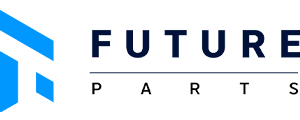Email format error
Email cannot be empty
Email already exists
6-20 characters(letters plus numbers only)
The password is inconsistent
Email format error
Email cannot be empty
Email does not exist
6-20 characters(letters plus numbers only)
The password is inconsistent


Choosing the Right 3D Printing Technology: A Comprehensive Guide
Introduction
3D printing has revolutionized the manufacturing industry by offering unprecedented flexibility, speed, and customization capabilities. However, with a multitude of 3D printing technologies available, choosing the right one can be a daunting task. In this article, we will explore four prominent 3D printing technologies: fused deposition modeling (FDM), stereolithography (SLA), selective laser sintering (SLS), and direct metal laser sintering (DMLS). By comparing and contrasting these technologies, we aim to provide insights into their suitability for various applications.
Fused Deposition Modeling (FDM)
FDM is one of the most widely used 3D printing technologies, known for its simplicity and affordability. In FDM, thermoplastic filaments are heated and extruded layer by layer to create a 3D object. This technology is ideal for rapid prototyping and low-cost production due to its relatively low material and equipment costs. FDM is particularly suitable for applications where speed and cost-effectiveness are prioritized, such as concept modeling and functional prototyping. However, its main drawback lies in its limited resolution and surface finish compared to other technologies.
Stereolithography (SLA)
SLA employs a different approach, using a liquid photopolymer resin that is cured layer by layer using a UV laser. This technology offers exceptionally high resolution and surface finish, making it ideal for producing intricate and detailed prototypes. SLA is widely used in industries such as jewelry, dentistry, and medicine, where precision and fine details are crucial. Despite its superior quality, SLA can be relatively expensive and may require post-processing to remove support structures and achieve desired surface finishes.

Selective Laser Sintering (SLS)
SLS operates by selectively fusing powdered materials, such as nylon or metal, using a high-powered laser. This technology does not require support structures, as unsintered powder serves as a self-supporting material during printing. SLS is well-suited for producing functional prototypes and low-volume production parts with complex geometries. It offers excellent strength, durability, and material versatility, making it a preferred choice for applications in the aerospace, automotive, and consumer goods industries. However, SLS machines are typically more expensive to operate and maintain compared to FDM or SLA systems.
Direct Metal Laser Sintering (DMLS)
DMLS is a cutting-edge 3D printing technology that enables the production of metal parts with exceptional precision and mechanical properties. Similar to SLS, DMLS utilizes a high-powered laser to sinter metal powder, layer by layer, to create fully dense metal components. This technology is widely utilized in the aerospace, automotive, and healthcare industries for producing high-performance metal parts, such as turbine blades, orthopedic implants, and customized automotive components. Despite its impressive capabilities, DMLS comes with a high initial investment and requires specialized knowledge for operation.
Comparison and Contrast
When comparing these four 3D printing technologies, several factors need to be considered, including material compatibility, surface finish, accuracy and resolution, and production speed. FDM and SLA are both suitable for producing prototypes with moderate detail and surface finish, with FDM being more cost-effective and SLA offering superior resolution. On the other hand, SLS and DMLS excel at producing functional prototypes and end-use parts with high strength and durability, with DMLS offering the additional benefit of metal printing capabilities.
Conclusion
In conclusion, choosing the right 3D printing technology requires careful consideration of various factors, including application requirements, budget constraints, and desired outcomes. Each technology has its own unique advantages and limitations, and understanding these differences is essential for making informed decisions. Whether it's rapid prototyping, functional testing, or end-use production, there's a suitable 3D printing technology available to meet your needs. As the 3D printing industry continues to evolve, we can expect further advancements and innovations that will further expand the capabilities of these technologies.

